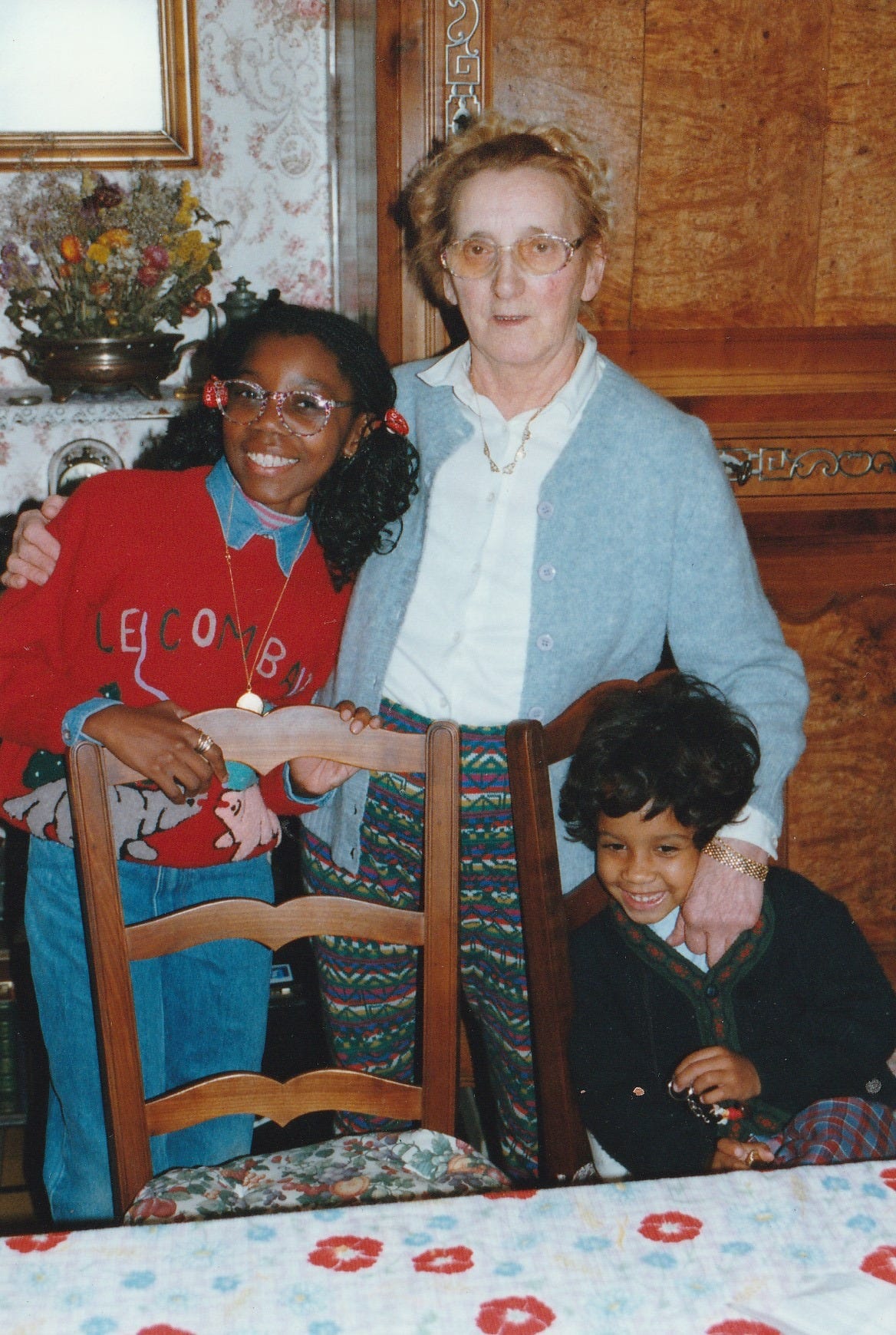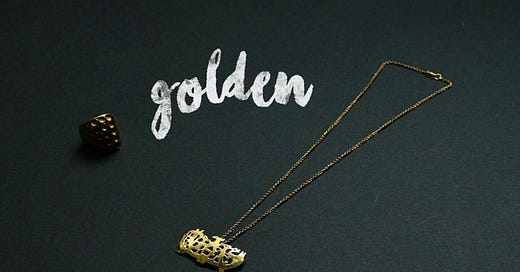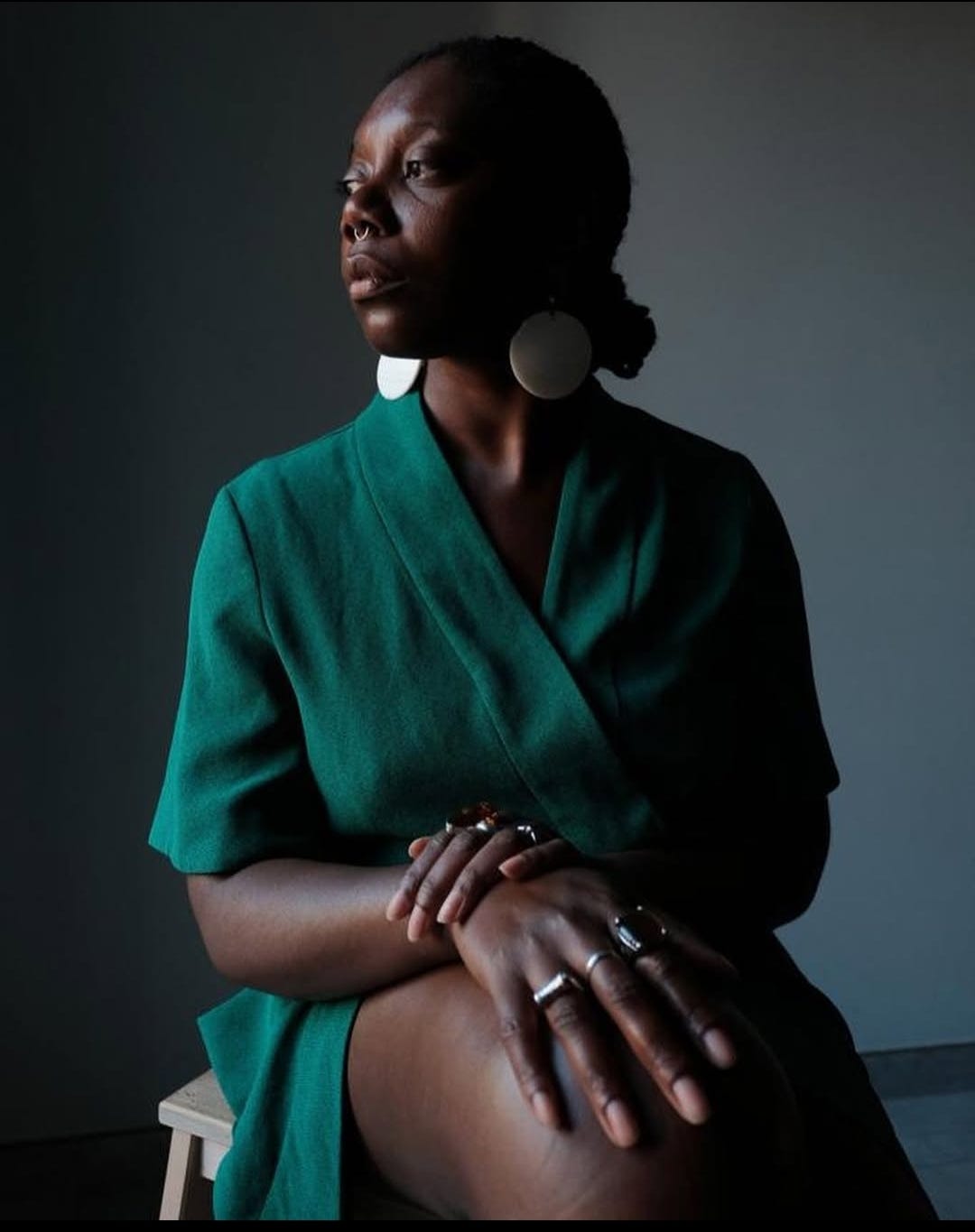Behind The Modern Heirloom, A Piece of History
Story Of A Necklace That Is More Than A Piece Of Jewellery
This newsletter is part of my exploration of style as a third-culture kid. And today we explore it through the lens of jewellery.
What is a third-culture kid:
[C]oined by the American sociologist and anthropologist couple John and Ruth Hill Useem in the 50s, [the] concept [of third-culture kid] describes children born to foreign parents raised in one or more countries. Consequently, they have a third culture that doesn’t completely fall within their parents’ home country and the country their family immigrated to.
As far as I can remember, jewellery has always been part of my life, even before it was part of my style.
In my family, jewellery is a token of love. I have seen my father gift my mother jewellery he designed or found during working trips throughout Central and West Africa. As for my mother, she initially wasn’t much of a jewellery wearer, but having a husband interested in it, he not only turned her into a wearer, but also a jewellery maker. Her signature is intricately designed rings and earrings made of hundreds of colourful beads.
At home, there is a picture of my grandfather’s mother looking regal and imposing in one of these studio portraits that are so characteristic of many African families. The picture must date back to the 50s or the 60s, and in it, my great-grandmother wears a necklace, a watch and a ring. My mother told me at the time it was unusual, even in wealthy families, for Cameroonian women to wear such jewellery. The jewellery my great-grandmother wore was all gifted by my grandfather and came from France and Germany, where he often travelled to.
On my father’s side, it was my grandmother who got me to wear jewellery. She was the typical French nan who loved going to the market to do her groceries, but above all, to find some toys and jewellery for her grandson and granddaughter. My grandmother was the one who gifted me a Black doll because she thought I needed to play with dolls that looked like me, in the 90s, in France! She was adamant to tell us every day we looked beautiful and proudly showed pictures of my brother and me to all the people she met while in the market, saying, ‘Look, have you seen how beautiful my grandchildren are?’
My grandmother didn’t have the vocabulary that we have today about intersectionality and misogynoir, yet she was ahead of her time. She understood her grandchildren weren’t the norm in the society they were growing up in.
Her gifting me jewellery was as much a token of love as a way to encourage me to channel my beauty as a Black girl. That’s how, as young as seven, I wore rings, necklaces, and earrings.

Fast forward to my 13th birthday, and my dad took me to a jeweller in Bordeaux whose boutique was a treasure trove for people passionate about ancient civilisations’ jewellery.
All the pieces he sold were in sterling silver and a reinterpretation of pieces of jewellery exhibited in museums. Each time people showed interest, it was the occasion to take out beautiful books to explain where the inspiration came from, and above all, make the customers travel time through jewellery.
For weeks, my dad had been eyeing a ring whose design was inspired by the Sumer civilisation. My father loved it because it is a signet ring that doesn’t look like one. In the picture below, I wear it on my fourth finger instead of my pinky because of its peculiar design. The signet is actually a roll engraved with many symbols. I still vividly remember that the jeweller explained to us that this type of ring was used by merchants to sign contracts. It was my first ‘real’ piece of jewellery that I still have and wear today.
That ring marked the beginning of a deeper connection — to jewellery not just as adornment, but as memory, legacy, and resistance.
It’s what led me to one particular piece: a necklace that still belongs to my mother, yet already feels like part of me.
The story it tells? It goes back generations, crossing rivers, cultures, and colonial histories — and it’s a tale I’ll carry around my neck one day.
According to the Merriam-Webster dictionary, a heirloom is:
something of special value handed down from one generation to another
That is exactly what this piece of jewellery is to me, even though it still belongs to my mother.
This gold necklace, made in Cameroon, is another gift from my father to my mother. It is a reproduction of the figurehead pictured below.
This figurehead, that is at my parents’, is part of the lore of the Sawa people - one of the ethnic groups I belong to. But before diving into its (his)story, let me put some context behind it:
I was born in Douala, which, besides being Cameroon’s economic capital, is a people and a language. And my grandfather’s mother was a Douala woman who married an Ewodi man. At their time, such a union was rare because the Douala people ruled over many people, including the Ewodis. But because the Doualas and Ewodis are patriarchal societies, my great-grandmother mostly spoke Ewodi to her children, but this didn’t prevent my family from speaking both Ewodi and Douala, as the latter was the lingua franca for many Sawa people. Sawa in Douala means “coast”,”shore”, but it is also a powerful word that encapsulates the richness of my people as it defines a multitude of cultures that culminate during the Ngondo.
The Ngondo is a water festival during which all Sawa chiefs and people gather and compete with each other, doing a dugout race to celebrate the jengu — the spirit inhabiting the Wouri river that crosses Douala. As a child, it was a moment I very much looked forward to because it meant visiting Tondè, my grandfather's village, to witness the wizard give his benediction to the rowers, watch them training, and enjoy my relatives showing us how they fished crocodiles — Ewodi people are powerful rapid rowers and swimmers rightly for that reason.
During the race, rowers from each Sawa ethnic group row in perfect synchronicity while the head of the rowers sings a song whose purpose is to keep people synchronised and give them the courage to win. The rowers then follow, repeating sentence after sentence the song's lyrics. Each dugout is painted in bright colours and decorated with a magnificent figurehead, symbolising the relationship each ethnic group has with the jengu, which happens to be either a crocodile or a manatee.

The figurehead is the physical embodiment of a legend based on a true story. And as such, it is considered a sacred object that celebrates the jengu.
The figurehead recounts a conflict between the Wuri and the Bodiman - two ethnic groups belonging to the Sawa people. Initially borne out of commercial issues, it turned into a personal dispute between the Wuri and Bodiman chiefs Etoca Nto and Ngalle Nyamsi. The breach of the commercial contract pushed Ngalle Nyamsi to create, through witchcraft, a crocodile, to sabotage the commercial route of the Wuri people. Little did he know that the magical creature would also attack the Bodiman trading vessels. After a long and bloody war that also involved the Douala people, the two parties decided to make peace and started doing religious rites to appease the jengu. Hence why the Ngondo celebrates the magical creature.
During my research, I was surprised to discover that the figurehead design isn’t typical of Sawa people’s art but has roots in Oceanic craftsmanship. The Sawa people got exposed to it through the Portuguese; as a consequence, it can be considered a product of colonialism.
Now let’s observe the figurehead’s design.
The base represents the white crocodile. Its white colour isn’t a case because it symbolises its supernatural power. The head doesn’t exactly look like one of a crocodile, but rather of a manatee and with good reason: by making a creature that is neither a crocodile nor a manatee, the artist highlights the otherworldly nature of the animal. It is a chimaera. The red mouth represents the blood of the Wuri and Bodiman people it killed. Meanwhile, a snake bites its tail. That same snake is held by a slave. The slave looks like a monkey to explain that he is not a man. The slave was the one who was ordered to create the monster.
Then there are two dogs, the yellow one represents the chief Etoca Nto, whereas the indigo blue one represents the chief Ngalle Nyamsi. In the Sawa culture, these two colours are worn by high-ranked nobles. Behind Ngalle Nyamsi (the indigo blue dog), there is a pelican, an animal of ill omen by the Sawa people. And indeed here, it incites the Bodiman chief to war and to create the jengu. In the centre, there is a turtle that embodies wisdom. To notice that it is placed between the two chiefs to symbolise peace, and above all, their wisdom to stop their dispute to save their people from the jengu by appeasing it through rituals. And here you have a whole tale in a piece of art.
I love this necklace, rightly because it beautifully encapsulates a part of my (hi)story. It now belongs to my mother, but both my parents made it clear that it is a piece that is an heirloom for the symbolic behind it.
Belonging to a people whose language and, therefore, culture are slowly disappearing, it is extremely important to keep a connection with where I come from, and there is no better object of art than jewellery to do it, in my opinion. Growing up in Europe, we are often taught that we come from countries that have primitive cultures, so I love it when people come to my mother and ask her about the necklace, and she starts telling them she is wearing a tale around her neck.










This was beautifully written. Thank you so much for sharing. Your grandma was a true treasure!